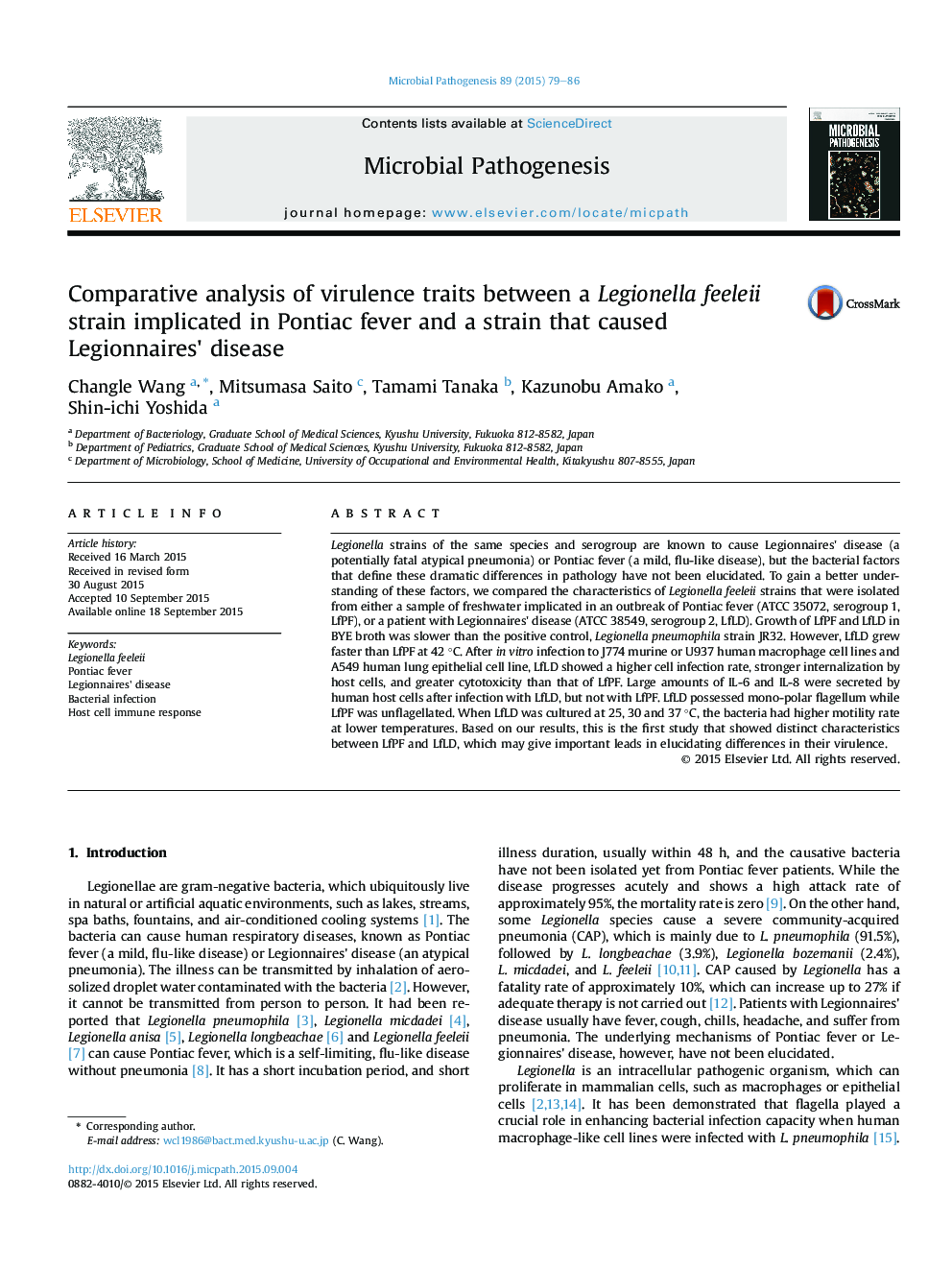| Article ID | Journal | Published Year | Pages | File Type |
|---|---|---|---|---|
| 3416446 | Microbial Pathogenesis | 2015 | 8 Pages |
•We compared the virulence traits of two Legionella feeleii strains.•They were implicated in Pontiac fever (LfPF) and Legionnaires' disease (LfLD).•LfLD showed stronger infection ability to host cells than LfPF.•Lager amounts of cytokines were secreted by human cells after infection with LfLD.•LfLD possessed mono-polar flagellum while LfPF was unflagellated.
Legionella strains of the same species and serogroup are known to cause Legionnaires' disease (a potentially fatal atypical pneumonia) or Pontiac fever (a mild, flu-like disease), but the bacterial factors that define these dramatic differences in pathology have not been elucidated. To gain a better understanding of these factors, we compared the characteristics of Legionella feeleii strains that were isolated from either a sample of freshwater implicated in an outbreak of Pontiac fever (ATCC 35072, serogroup 1, LfPF), or a patient with Legionnaires' disease (ATCC 38549, serogroup 2, LfLD). Growth of LfPF and LfLD in BYE broth was slower than the positive control, Legionella pneumophila strain JR32. However, LfLD grew faster than LfPF at 42 °C. After in vitro infection to J774 murine or U937 human macrophage cell lines and A549 human lung epithelial cell line, LfLD showed a higher cell infection rate, stronger internalization by host cells, and greater cytotoxicity than that of LfPF. Large amounts of IL-6 and IL-8 were secreted by human host cells after infection with LfLD, but not with LfPF. LfLD possessed mono-polar flagellum while LfPF was unflagellated. When LfLD was cultured at 25, 30 and 37 °C, the bacteria had higher motility rate at lower temperatures. Based on our results, this is the first study that showed distinct characteristics between LfPF and LfLD, which may give important leads in elucidating differences in their virulence.
